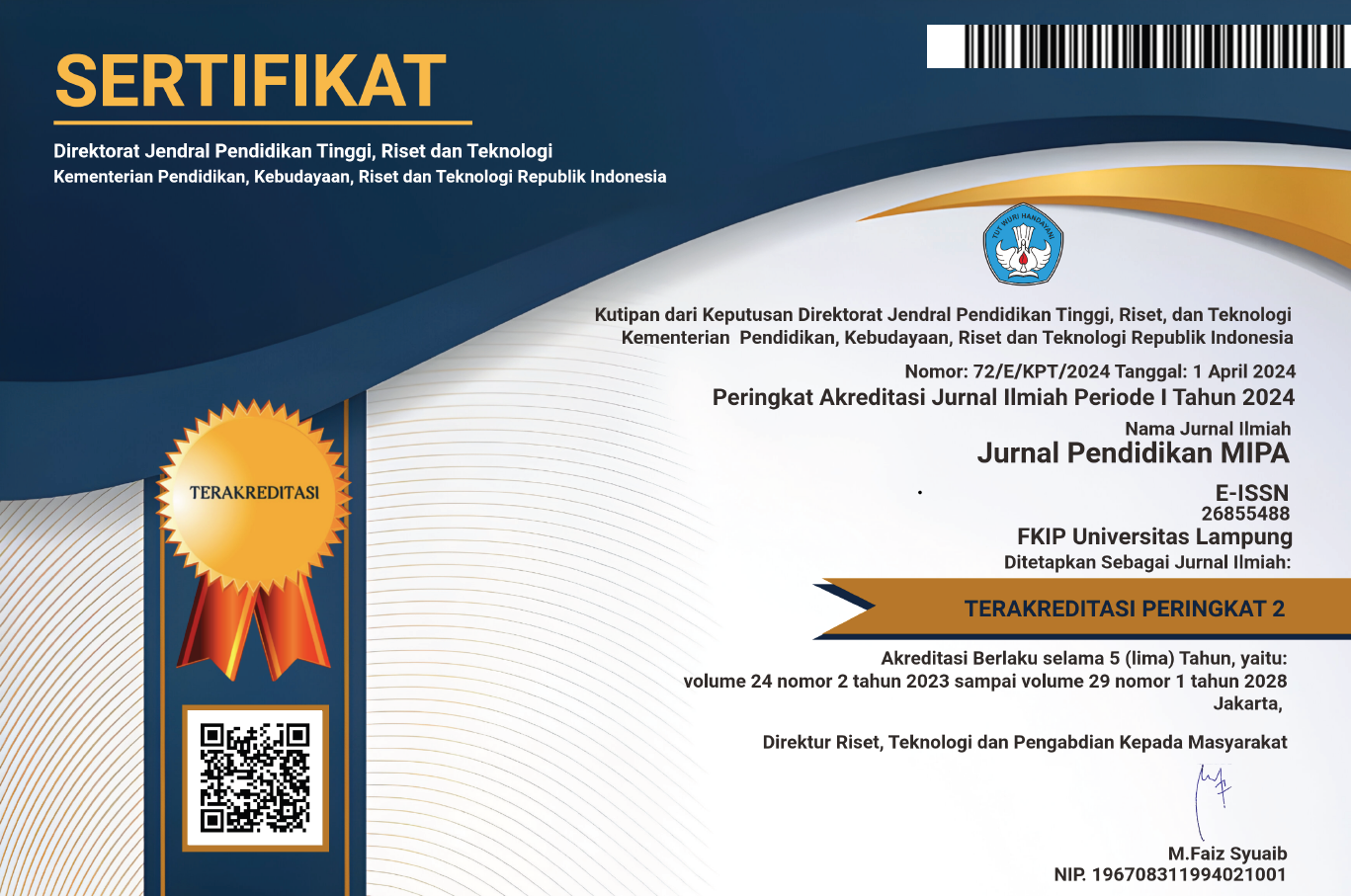Analysis of Students Readiness in Online Learning During The Covid-19 Pandemic
 Country:
Country:
(1) Universitas Lampung, Indonesia
(2) Universitas Lampung, Indonesia
The educational paradigm, which was originally face-to-face based, has shifted to virtual education or e-learning especially during the Covid-19 pandemic. Student readiness is an important factor in the success of e-learning. In this study, an analysis will be carried out on the readiness of students in online learning and the relationship and its effect on learning outcomes. This research procedure includes several stages, namely: (1) adapting the instrument based on a literature review, (2) analyzing the validity of the content and distributing the instrument to the research sample, and (3) evaluating research data, examining correlation, and its effect on learning outcomes. The data obtained were analyzed statistically through reliability analysis and Pearson correlation. The research sample consisted of 120 students of chemistry education at the FKIP, University of Lampung. Based on the results of statistical tests obtained results. Based on the research results, it was found that all dimensions of student readiness in online learning had a significant positive correlation with learning outcomes with a sig <0.05. Based on the linear regression test, it was found that student readiness in online learning had an effect on learning outcomes by 20.6%. It can be concluded that student readiness in online learning has an effect on learning outcomes.
Keywords: student readiness, online learning, learning outcome, Covid-19 pandemic.
Abaidoo, N., & Arkorful, V. 2014. The role of e-learning, the adventages of its adoption in higher education. International Journal of Education and Research. 2(12). 397- 410.
Abbad, M. M., Morris, D., & De Nahlik, C. (2009). Looking under the bonnet: Factors affecting student adoption of e-learning systems in Jordan. International Review of Research in Open and Distributed Learning, 10(2).
Creswell, J. W. (2012). Educational research: Planning, conducting, and evaluating quantitative and qualitative research (4thed.). Boston, MA: Pearson.
Hammad, J., Hariadi, M., Purnomo, M.H., Jabari, N & Kurniawan, F. 2018. E-learning and adaptive e-learning review. International Journal of Computer Science and Network Security. 18(2). 48-55
Hung, M.L., Chien, Chou., Chen, C.H., & Own, Z.Y. (2010). Learner readiness for online learning: Scale development and student perceptions. An International Journal Computer & Education. 55(3). 1080 – 1090.
Indriani, T. M., Fathoni, T., & Riyana, C. (2018). Implementation of blended learning in distance education programs at the vocational secondary education level [Implementasi blended learning dalam program pendidikan jarak jauh pada jenjang pendidikan menengah kejuruan]. Educational Technologia, 2(2), 129-139.
Liu, Y., & Wang, H. (2009). A comparative study on e‐learning technologies and products: From the East to the West. Systems Research and Behavioral Science: The Official Journal of the International Federation for Systems Research, 26(2), 191-209.
Mulyani, D. (2013). Relationship between students' readiness and learning achievement [Hubungan kesiapan belajar siswa dengan prestasi belajar]. Jurnal Ilmiah Konseling, 2(1), 27 – 31.
Munir. (2010). Information and communication technology-based curriculum [Kurikulum berbasis teknologi informasi dan komunikasi]. Bandung. Alfabeta.
Rusman, D. K. & Riyana, C. (2012). Information and communication technology-based learning: Developing teacher professionalism [Pembelajaran berbasis teknologi informasi dan komunikasi: mengembangkan profesionalitas guru]. Jakarta: Rajawali Pers.
Rusman, T. (2015). Statistics for research: Applications with SPSS [Statistika penelitian: Aplikasi dengan SPSS]. Graha Ilmu. Yogyakarta.
Sangra, A., Vlachopoulos, D., & Cabera, N. (2012). Building an inclusive definition of e-learning: An approach to the conceptual framework. The international Review of Research in Open and Distance Learning, 13(2), 145 – 159.
Smedley, J. (2010). Modelling the impact of knowledge management using technology. OR insight, 23(4), 233-250.
Waryanto, N. H. (2006). Online learning as a learning innovation [Online learning sebagai salah satu inovasi pembelajaran]. Jurnal Pythagoras, 2(1), 10 – 23.
Yilmaz, R. (2017). Exploring the role of e-learning readiness on student satisfaction and motivation in flipped classroom. Elsevier: Computers in Human Behavior, 1(70), 251 – 26.
Refbacks
- There are currently no refbacks.

This work is licensed under a Creative Commons Attribution-ShareAlike 4.0 International License.






